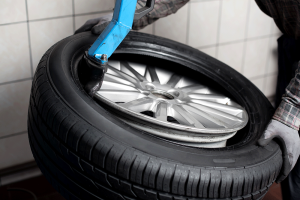When you are driving, you will want to have your vehicle in the most reliable condition possible. This includes having regular maintenances performed on it. If you ever notice anything out of the norm with your vehicle, make sure to bring it in so we can inspect it. This will help improve the efficiency and performance of the vehicle when you drive. It can also help prevent parts and components from failing. Regular maintenance is important to keep the vehicle lasting as long as possible. One thing to be aware of is any light that might illuminate on the dashboard. This may signal that there is a larger issue happening with your vehicle. If you start to notice the light blinking, make sure to pull the vehicle over as soon as possible and turn it off. This can prevent further damage from being done to the vehicle, as well as preventing a costly repair bill.

Checking the Tires on a Regular Basis
When you notice a light illuminate on the dashboard this is a good indication of what might be wrong. If it looks like an exclamation point between parentheses, it means your tire pressure is way too low. Like other gases, air contracts, as it gets colder. This means there is less of it in your tires. Tire pressure can drop between one and two pounds for every ten degree decrease in temperature, and that can make a big difference to a driver who has not check the tires since the summer or fall. To help ensure the tire pressure, you should check all of them on a regular basis.
How the Tires are Affected
On a day where the low temperature is twenty four degrees, your tires could be five to ten pounds per square inch lower than they were on a seventy degree morning. Even if you filled up to a comfortable pounds per square inch of thirty two in the fall, your tires could have dropped as much as twenty five percent by today. This is enough to trigger a warning in most vehicles. Tire manufactures say when the temperatures drop, it is a good time to make sure your tires are properly inflated. Air pressure can affect steering, handling, gas mileage, and the life of the tires themselves. Every vehicle has its own ideal pounds per square inch. It is usually written on the driver’s side door jamb, and in the owner’s manual. Make sure to check this so the tires are inflated properly.
Why the Air Pressure Changes
Gas expands with heat and contracts with cold. So when winter arrives, it is best to check in on your tire pressure for safety. Tire pressure drops by one to two pounds per square inch for every ten degrees. If the temperature changes drastically, it is a good time to have the tires inspected. You can also bring the vehicle in, and we can check the air pressure in the tires for you. By doing this, you can increase the safety and reliability of your vehicle when you drive.



